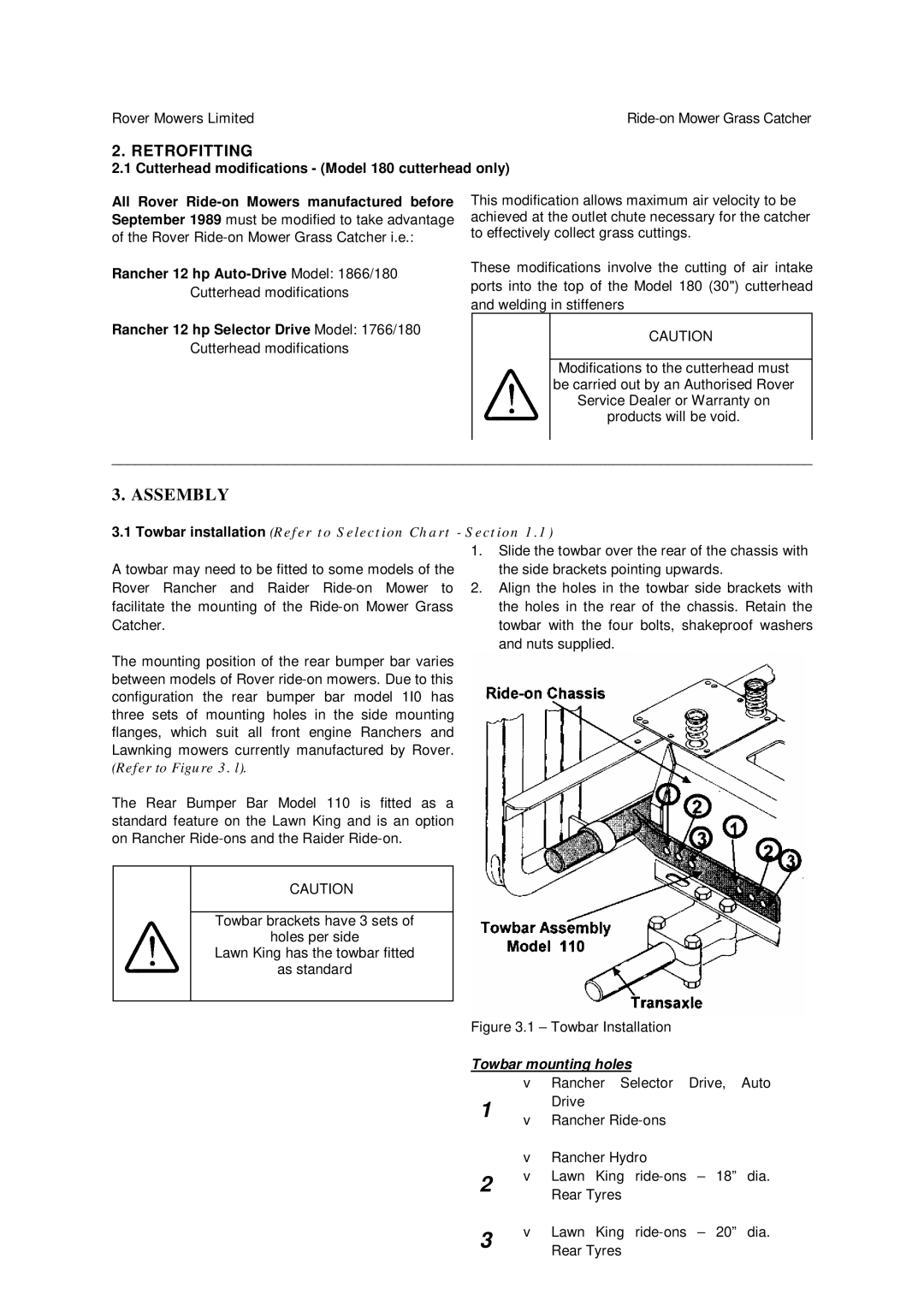108, 109 specifications
The Rover 108 and 109 are compact cars that represent a significant part of the British automotive landscape during the late 20th century. Known for their practicality, efficiency, and unique British styling, these models have garnered a loyal following among enthusiasts and collectors alike.The Rover 108 was introduced as a small hatchback in the late 1980s, aimed primarily at young drivers and urban users who desired a maneuverable car that offered decent performance without compromising on comfort. Its compact dimensions made it ideal for city driving, while still providing ample interior space. The minimalist design approach emphasized clarity and functionality, making it a user-friendly vehicle.
Under the hood, the Rover 108 was equipped with a range of engine options, typically starting with a reliable 1.1-liter engine, which was both economical and easy to maintain. The focus on fuel efficiency was particularly appealing during an era marked by rising fuel prices, allowing drivers to enjoy cost-effective motoring.
Contrarily, the Rover 109 offered a slightly larger framework and advanced features that appealed to families and those needing a bit more space. With its generous interior capacity, the 109 became known for its comfortable seating and good luggage space, enhancing its usability for longer journeys. Its engines were also upgraded to offer more power, improving driving dynamics and responsiveness.
Among the key technologies found in both models were their front-wheel drive configurations and sophisticated suspension systems, which aimed to provide a smooth and responsive driving experience. Safety features included crumple zones and advanced braking systems, reflecting the evolving standards of vehicle safety during the time.
The Rover 108 and 109 brought forth a combination of affordability, design, and practicality. Despite being overshadowed by their competitors in a rapidly changing automotive market, they remain fondly remembered for their character and utility. Both models are a testament to Rover's commitment to delivering accessible yet stylish vehicles that catered to a diverse range of drivers. Enthusiasts continue to appreciate these models for their nostalgic value and distinctive presence on the road, contributing to the enduring legacy of the Rover brand in the realm of compact cars.

